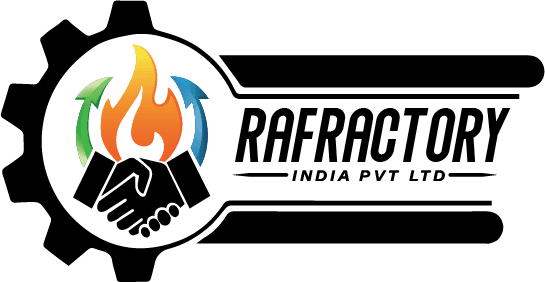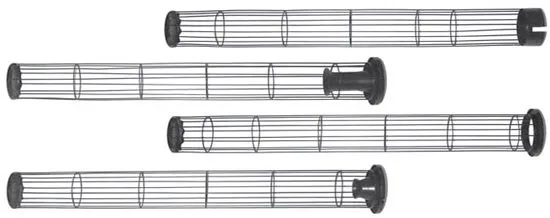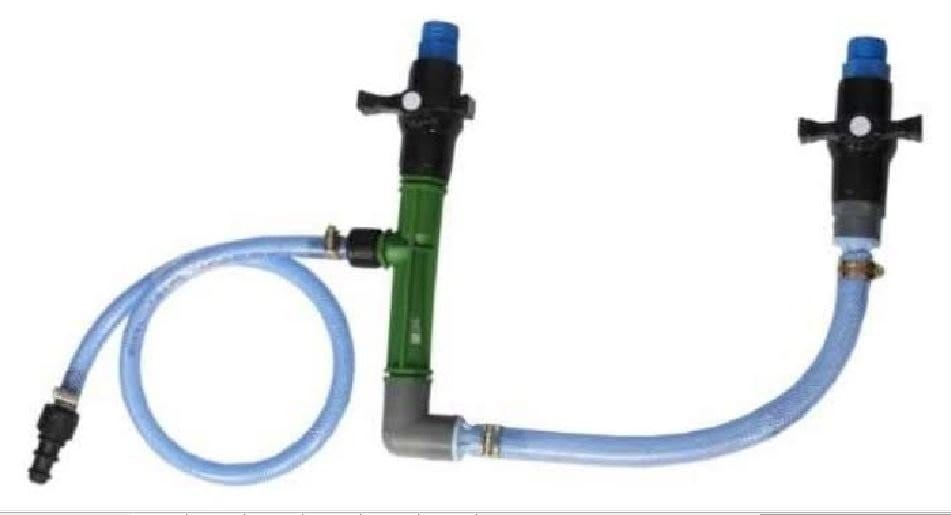- Description: The most common type, suitable for cylindrical filter bags.
- Applications: Cement plants, steel mills, and chemical industries.
- Features:
- Sturdy construction for high-pressure environments.
- Smooth finish to prevent bag wear.
- Description: Designed for oval-shaped filter bags, offering better airflow.
- Applications: Dust collectors in power plants and food processing industries.
- Features:
- Optimized design for enhanced dust collection.
- Corrosion-resistant materials for long-term use.
Star or Multi-Lobed Filter Cages
- Description: Used for pleated or star-shaped filter bags, maximizing filter area.
- Applications: Foundries, cement kilns, and industries with fine dust particles.
- Features:
- Increased surface area for improved filtration efficiency.
- Lightweight yet durable.
Split Filter Cages
- Description: Two-piece or multiple-section cages for easier handling and installation.
- Applications: Systems with limited space or complex assembly requirements.
- Features:
- Easy to assemble and disassemble.
- Compact design for transportation and storage.
Coated Filter Cages
- Description: Filter cages with specialized coatings like epoxy, PVC, or PTFE for added protection.
- Applications: Corrosive environments, including chemical plants and waste incinerators.
- Features:
- Superior resistance to abrasion and corrosion.
- Prolonged service life in challenging conditions.
Venturi-Enhanced Filter Cages
- Description: Includes a venturi device to optimize airflow and improve filtration efficiency.
- Applications: High-performance dust collection systems.
- Features:
- Enhanced cleaning and dust release.
- Reduced energy consumption.
Dust Collection Filters
Used in baghouses and dust collectors to manage particulate emissions.
- Applications:
- Blast furnaces, steel mills, and rolling operations in ferrous plants.
- Smelters, refining units, and foundries in non-ferrous plants.
- Filter Types:
- Bag filters (woven and non-woven fabrics).
- Cartridge filters for fine dust collection.
- Benefits:
- Reduces airborne particles.
- Ensures compliance with environmental regulations.
- Applications:
Liquid Filtration Systems
- Applications:
- Cooling water systems, acid cleaning baths, and slurry separation.
- Electrolyte purification in non-ferrous plants like aluminum and copper smelting.
- Filter Types:
- Plate and frame filters.
- Disc filters for slurry and concentrates.
- Pressure leaf filters for electrolyte solutions.
- Benefits:
- Enhances process efficiency.
- Prolongs the life of downstream equipment.
Gas Filtration Systems
Filters used to clean exhaust gases from furnaces and converters.
- Applications:
- Gas cleaning in steel production processes (e.g., BOF, EAF).
- Flue gas filtration in non-ferrous smelters.
- Filter Types:
- Ceramic filters for high-temperature applications.
- HEPA filters for fine particle removal.
- Benefits:
- Captures harmful emissions like SO₂ and particulate matter.
- Reduces environmental impact.
Hydraulic and Lubrication Filters
Critical for protecting machinery and equipment.
- Applications:
- Filtration of hydraulic oils in rolling mills.
- Lubrication oil purification in furnaces and conveyors.
- Filter Types:
- Inline filters for hydraulic systems.
- Oil mist filters for lubrication systems.
- Benefits:
- Prevents wear and tear on machinery.
- Extends equipment life and reduces maintenance costs.
Air Intake Filters
Used to ensure clean air supply for machinery and processes.
- Applications:
- Compressors, blowers, and turbines in ferrous and non-ferrous plants.
- Filter Types:
- Panel filters for coarse filtration.
- Pleated filters for high-efficiency air cleaning.
- Benefits:
- Protects equipment from dust and debris.
- Improves energy efficiency.
Magnetic Filters
Designed to remove ferrous particles from liquids and slurries.
- Applications:
- Steel manufacturing to capture iron particles.
- Non-ferrous plants to ensure purity in processes.
- Benefits:
- Enhances product quality.
- Prevents contamination in critical processes.
Woven and Non woven Materials
Woven materials are produced by interlacing two sets of yarns or threads (warp and weft) in a regular pattern. This structured approach ensures high strength and durability.
Key Features
- Strength: High tensile strength due to the interwoven structure.
- Durability: Resistant to wear and tear, ideal for long-term use.
- Flexibility: Available in various patterns and densities for specific applications.
- Breathability: Allows air and moisture to pass through, suitable for clothing and industrial use.
Applications
- Industrial Uses: Conveyor belts, filtration fabrics, and industrial safety gear.
- Textiles: Apparel, upholstery, and furnishings.
- Construction: Geotextiles for soil stabilization and reinforcement.
- Packaging: Sacks, bags, and industrial wrapping materials.
Non-Woven Materials
Non-woven materials are engineered fabrics created by bonding fibers together using chemical, mechanical, or heat processes. Unlike woven materials, they do not involve interlacing threads, making them lightweight and versatile.
Key Features
- Cost-Effective: Easier and faster to produce compared to woven materials.
- Lightweight: Ideal for single-use or disposable applications.
- Customizable: Can be tailored for specific properties like water resistance, breathability, or filtration efficiency.
- Eco-Friendly Options: Many non-woven materials are recyclable or biodegradable.
Applications
- Medical and Healthcare: Surgical masks, gowns, caps, and wound dressings.
- Filtration: Air, water, and liquid filters for industrial and domestic use.
- Automotive: Liners, insulation, and interior components.
- Agriculture: Crop covers, weed barriers, and soil erosion control.
- Packaging: Shopping bags and protective wraps.
Pulse Valves
Pulse valves are essential components in industrial dust collection systems, specifically designed for efficient and reliable performance in baghouse filters. These valves play a critical role in maintaining clean airflow by delivering short bursts of high-pressure air to clean filter bags, ensuring uninterrupted system operation and optimal filtration efficiency.
Sequence timers
Sequence timers are essential devices used in industrial automation systems to control the timed activation or deactivation of equipment, processes, or signals in a predefined sequence. They ensure precision, synchronization, and efficiency, making them vital in industries where process timing is critical.
Rotary filter cleaners
Rotary filter cleaners are advanced systems designed to maintain and optimize the performance of filtration equipment by removing dust, debris, or particulate build-up from filter media. These devices are essential in industries requiring continuous and efficient filtration, ensuring consistent system operation and enhanced filter lifespan.
Venturies
Venturies, or Venturi tubes, are specialized devices used to measure, control, and regulate the flow of fluids (gases or liquids) through a system. By leveraging the Venturi effect, these components ensure accurate flow measurement, efficient mixing, and optimal system performance in a wide range of industrial applications.
Air plated filters
Air plated filters are constructed with a unique plated design, maximizing surface area for enhanced filtration efficiency. The pleated or plated structure allows these filters to trap a large volume of particles while maintaining consistent airflow, ensuring clean and breathable air. They are suitable for a wide range of applications, from HVAC systems to industrial dust collectors.
Key Features of Air Plated Filters
- High Filtration Efficiency: Capable of capturing fine particles, including dust, pollen, and microorganisms.
- Increased Surface Area: Plated design ensures superior particle retention and extended service life.
- Durable Construction: Built with robust materials to withstand challenging environments.
- Low Pressure Drop: Optimized design ensures efficient airflow with minimal resistance.
- Versatile Compatibility: Fits various systems, including HVAC units, industrial scrubbers, and air handling units.
Mechanical shake and reverse Bags
Mechanical shake and reverse bags are a part of dust collector systems where accumulated dust is removed through a combination of mechanical shaking and reverse air pulses. The shaking action loosens the dust from the surface of the bags, while reverse airflow pushes the dislodged particles into a collection area. This dual-action cleaning mechanism enhances the filter’s efficiency and lifespan.























































